Perioral Dermatitis
What is Perioral Dermatitis?
Perioral dermatitis is also known as periorificial dermatitis, and it’s an inflammatory rash that mostly develops around the mouth. The rash can also spread to involve areas around the nose and eyes4.
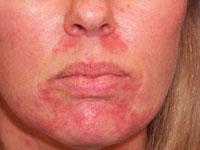
The rash is usually a red bump and scaly. The rash may lead to slight itching and burning. Perioral dermatitis is more common in women between the ages of 16- 45 years. It also affects children of all ages.
Causes
Researchers have not identified the exact causes of perioral dermatitis. But this condition is associated with the use of topical steroids that were meant to treat other conditions. Use of nasal sprays that contain corticosteroids can also cause this condition.
Research has also documented that particular ingredients used in making cosmetics can also cause this condition. Skin creams that contain paraffin or petrolatum can aggravate perioral dermatitis.
There are several factors that can trigger perioral dermatitis. They include:
Rosacea
It is a skin condition that is characterized by redness and visible blood vessels oin your face. It may also cause small, pus filled bumps on your face. These signs and symptoms may increase for weeks or months and reduce for awhile.
Some of the symptoms of this condition include:
The central part of the patient’s face is usually red. This condition causes constant redness in the central areas of your face. This causes small blood vessels on your nose and cheeks to swell and become visible. Some people may develop pimples on their face that resemble acne and may contain pus. It may also cause your eyes to dry, swell and eyelids to become red.
This condition can affect anyone but it occurs in middle –aged women who have fair skin. The cause of rosacea is unknown but it is assumed that a combination of environmental and genetic factors may lead to this condition. Rosacea can be triggered by several factors such as:
- Taking hot drinks and spicy food
- High temperatures
- Drinking alcohol
- Exposure to sunlight
- Use of drugs that enlarge blood vessel
Other triggers of perioral dermatitis include:
- Use of fluorinated toothpaste
- Use of oral contraceptives
- Fungal and bacterial infection
- Constant spillage of saliva from your mouth
Risk Factors
There are some factors that can increase your chances of developing this condition. They include:
- Gender: Women are at a higher risk of developing this condition than men.
- Age: This condition is more likely to affect teenagers, middle-aged adults and young adults.
- Use of ointments and steroid cream on the face may also elevate your risk of developing this condition.
- Those people with a history of allergies are also at risk of perioral dermatitis.5
Symptoms
Patients with perioral dermatitis usually have red bumpy rashes around their mouth and in the skin around the nose. These rashes may appear scaly and can occur in the areas around the eyes, chin and on the forehead. In some cases, these bumps may contain pus fluids and resembles acne. When the rash worsens, you will experience burning and itching feelings.4
Diagnosis
There are limited diagnostic tests available for perioral dermatitis. This condition is usually diagnosed through a physical examination. In this exam, your doctor observes your skin for signs and symptoms associated with perioral dermatitis.
There are no tests that are done for this condition but in some cases, your doctor can conduct a culture analysis to find out if there is an infection. In culture test, your doctor scraps a sample of the affected skin and analyses it the laboratory to determine if there is bacterial or fungal infection.1
Management and Treatment
Perioral dermatitis can be managed through a number of treatment options. They include:
Use of tropical treatment
There are various tropical therapies to choose from to treat perioral dermatitis such as:
- Erythromycin– It is an antibiotic that can be used to treat many skin conditions. This drug can be taken orally or applied as a solution to the affected area. Although erythromycin is effective in treating many conditions, it causes undesirable side effects such as
- It causes nausea, vomiting, abdominal pain and loss of appetite.
- Leads to allergic rashes on the skin
- It can also make you lose your hearing
- Clindamycin- It is a type of lincosamide antibiotic that is used to treat infections caused by bacteria. It can be used orally or topically or injected in your vein.
- Metronidazole- It is a type of imidazole antibiotic that can be used to treat bacterial and other protozoa infections. It is also effective in treating skin condition. You have to apply metronidazole on the affected area twice each day; in the morning and evening after you have cleaned the area with a cleanser. This treatment can take between three to four months but you will start to see some improvements after three weeks. Your doctor can only stop you from using this treatment if there is no improvement in your skin condition.5
Oral therapy
In case perioral dermatitis is so severe, your doctor may prescribe use of oral antibiotics for a period of 6 to 12 weeks. These antibiotics include: tetracycline and oral erythromycin which is given to expectant mothers.
Measures to Prevent Perioral Dermatitis
Although the causes of this condition are not known, there are some measures that you can take to alleviate its signs and symptoms and prevent it from worsening:
- Avoid using ointment and steroid creams from over the counter. Use steroid creams and ointment that your doctor has prescribed. This condition is more likely to occur when you use stronger cream, therefore ask your doctor for the weakest cream to use.
- Avoid applying heavy cosmetics on your skin. You can ask your doctor which moisturizer is the best to use. You may also try to switch brands.
- Use gentle cleansers. Ask your dermatologist which cleanser is the best for use.
- Limit exposure to elements that cause this condition. Protect yourself from ultraviolet rays by wearing sunscreens.3
Pictures
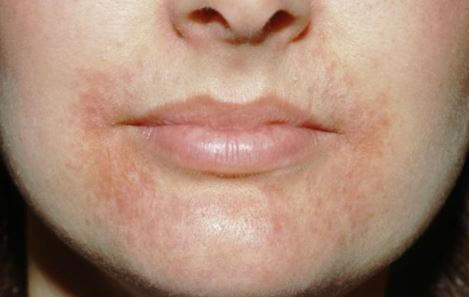
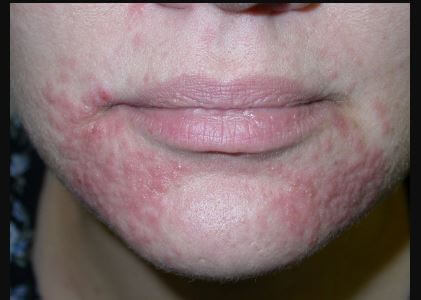

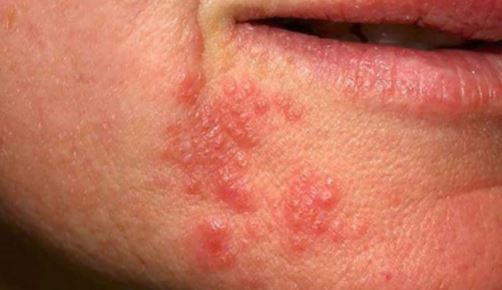
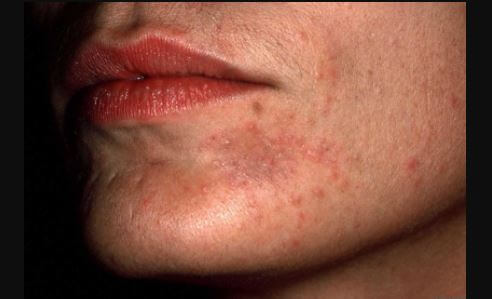

Reference List
- Perioral dermatitis. http://www.healthline.com/health/perioral-dermatitis#prevention9
- http://www.webmd.com/skin-problems-and-treatments/perioral-dermatitis
- http://emedicine.medscape.com/article/1071128-overview#a2
- http://www.aocd.org/?page=PerioralDermatitis
- https://www.dermnetnz.org/topics/periorificial-dermatitis/
- Rosacea. Available at http://www.mayoclinic.org/diseases-conditions/rosacea/symptoms-causes/dxc-20235172
